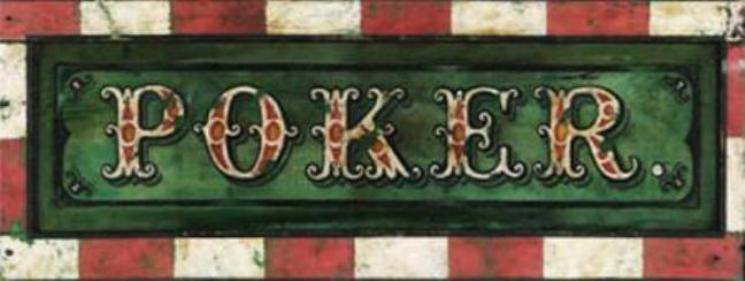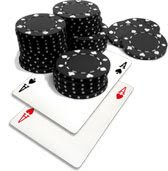This is my favorite series of tips to date that I have been giving out. It deals exclusively with studying the people in the game that you are in at the poker table. With careful study of your opponents, you will learn to gauge their actions more accurately and become better at determining when they are being honest and when they are trying to misrepresent themselves.
In an earlier article I mentioned the foundation for this series. That is, when a person "tells" a lie, the brain has an internal conflict. One part of the brain encourages the lie, seeking a particular outcome, while another part of the brain is confused and seeks something different. The internal conflict tends to manifest in physical indicators that will give an astute player a considerable edge at the poker table. This may be the origin of poker "tells" for all we know. Whatever the origin, these are the physical cues that a player must learn to decipher to use in making decisions during the course of play.
Last time I mentioned how you should watch the hands for key indications of a misrepresentation. There is another area of the body that tends to give away a lie quite effectively. When a person is attempting to misrepresent to another, they are very much aware of their upper body. Specifically, they are often focused on the mid-chest to the top of the head because they know that is the area being observed by the person they are communicating to. As a result, they tend to have a considerable amount of focus and control over that area.
However, when a person is lying or attempting a misrepresentation, a part of the body that is often not being observed will manifest the internal conflict I mentioned earlier. In this case, the feet and legs will begin to shake or jiggle in a particular fashion. What is important to realize is that people who are misrepresenting themselves often are completely unaware of this. The physical manifestation and motion of the feet and legs are completely unconscious to the "teller", while an astute observer can pick it up.
For example, a player may be representing a flush as a result of a big turn or river card and you choose to ask them if they have it. Keep in mind the representation has already been made. Therefore, their action combined with your question can create a lot of pressure, even if they choose to not answer. The physical shaking of the legs and feet can be directly observed or if you are across the table, you can see them "bobbing" as a result of this until they become aware of it. It may only occur briefly but if you are paying attention, you can't miss it.
The feet or legs responding to a misrepresentation may be difficult to see when seated at a poker table, particularly if you are seated at opposite ends of a table. However, the fact that your opponents are seated, will actually make this tell easier to pick up. As noted, the shaking of the foot or leg from a seated position will generally cause movement of the upper torso. Another interesting thing to watch out for at this juncture are hand movements that attempt to alleviate the pressure or the lower body movement once the player becomes aware of it. Watch for the hand to actually move toward the leg as if to stop it. Also, stay aware of the hand attempting to "cool" off the body by fanning past the face or touching around the neck.
Keep in mind, a skillful experienced player may attempt to use some of these cues to his advantage by representing a lie when it is not. Remember, by inquiring of the player if that is what they are doing will also render certain cues. However, false representation of "lying" cues would be exceptional and only really good actors can pull it off without appearing to be performing.
In any event, remember that these cues can manifest a little differently in every person. Keep a mental record of what they mean as you watch other players in action. When you have been able to master the meaning of each signal in the players you are against, you will see a marked improvement in your ability to read and profit from your opponents misgivings.
Keep checking back for interesting tips on picking up valuable physical tells from your opponents.
Thursday, October 23, 2008
Subscribe to:
Post Comments (Atom)









No comments:
Post a Comment